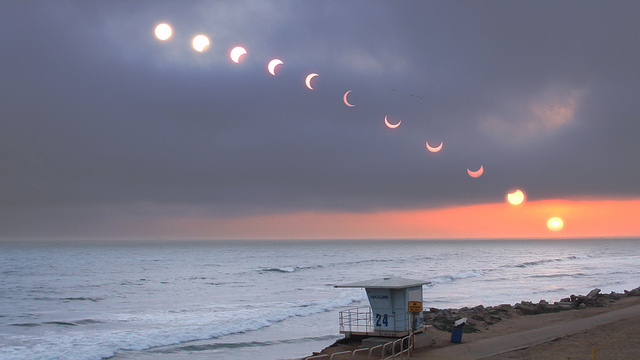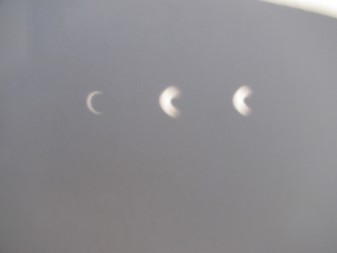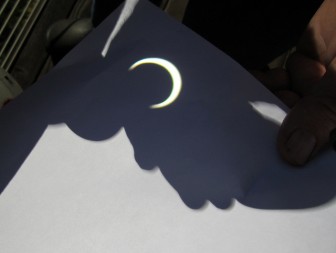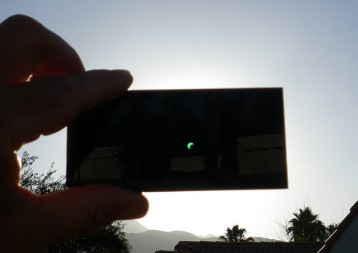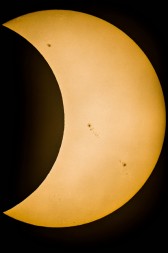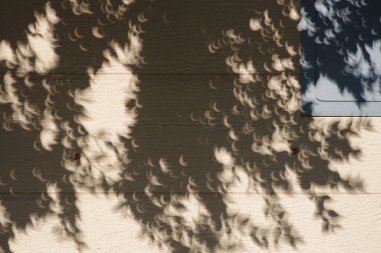Know how you can start a fire with just a magnifying glass and the sun? And if you stare at the sun, the lens of your eye is the magnifying glass, and the burning happens on your retina? Well, cameras have the same problem. So how do you take a picture of the sun--which you might want to do during, say, a solar eclipse?
Turns out there are as many ways to photograph an eclipse as there are to watch it. With a bit of preparation and the generosity of strangers, I got to experience five of them during Sunday's annular eclipse.
My husband and I drove from the Bay Area up to Mt. Hirz near Lake Shasta which was smack in the middle of the optimal eclipse viewing path. About a mile from the top, we ran into an amateur astronomer named Ben who'd scoped the whole mountain the previous day and decided this was the best spot. He had a telescope, so we stayed with him.
A bit of cloud cover when the eclipse started had us all chewing our fingernails, but then it cleared up--and what a view!
Although I am an admirer of photography, I am not the most skilled practitioner. Flickr, however, is a treasure trove of beautiful images. All the pictures in this post are from photographers kind enough to share their work openly, for the enjoyment of the masses.
